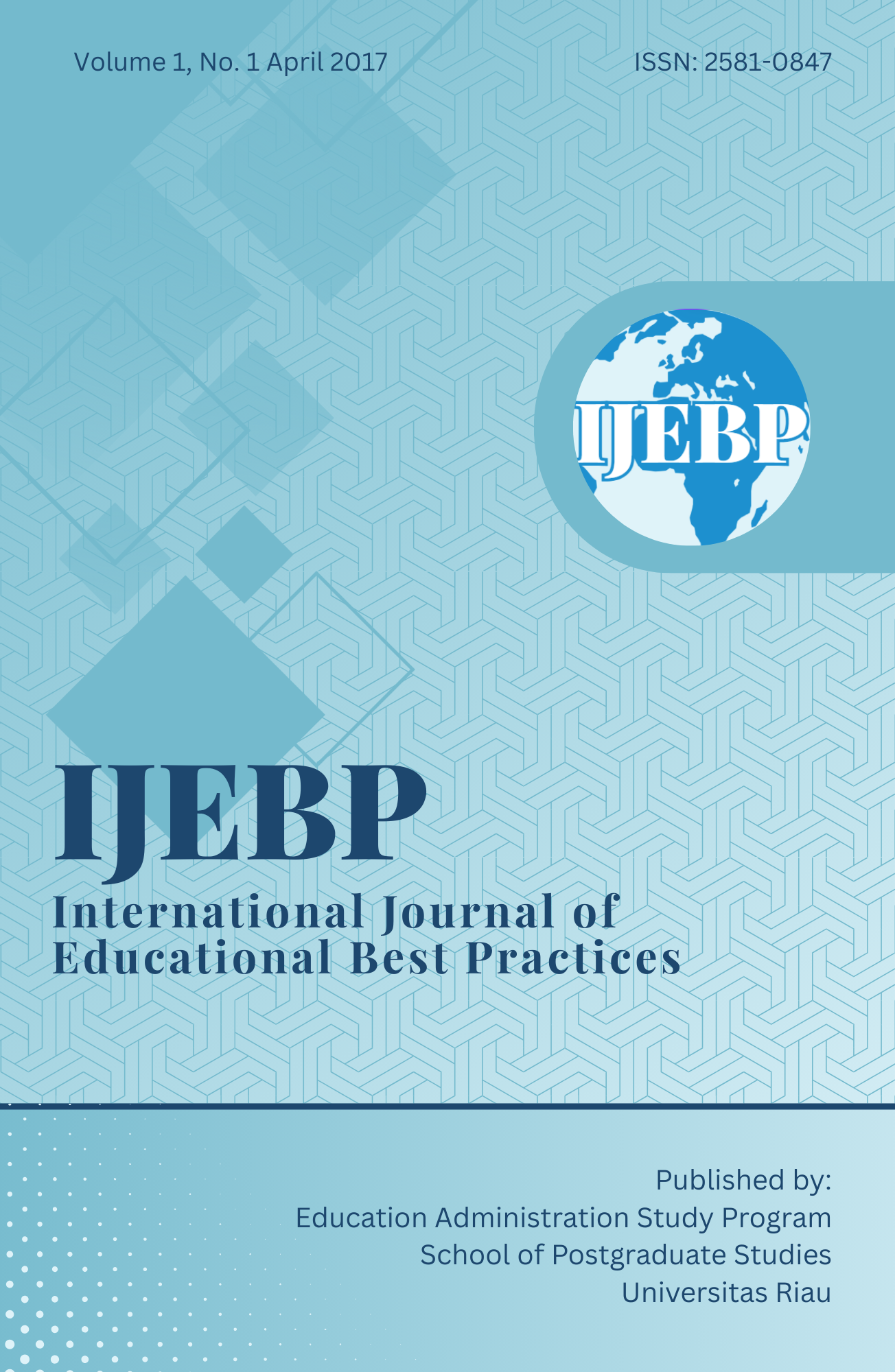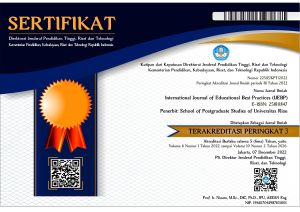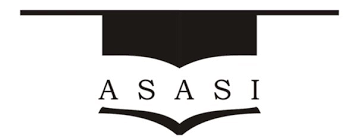Talent Management and Teacher Leadership Talent Development in High Performing School in Malaysia
DOI:
https://doi.org/10.31258/ijebp.1.1.19-37Keywords:
talent management, high performing school, teacher leadership, talent developmentAbstract
Researches on the effective leadership reveal that principals in high performing schools are successful in improving schools outcomes through who they are, the strategies they use, as well as the specific combination and timely implementation and management of these strategies as a result of the unique contexts in which they work. The present research work tries to explore and confirm the talent management factors (TMFs) responsible for developing teacher leadership talent (TLT). The proposed TMFs were tested and validated through a sample of 400 teachers of High Performing School in Malaysia using Amos 19. Hypotheses were tested at a 95% confidence level and the Root Mean Square Error of Approximation (RMSEA), Tucker-Lewis Index (TLI) and Comparative Fit Index (CFI) were used to test the structural equation model of talent management. The obtained RMSEA value was 0.049, TLI value was 0.942 and CFI value was 0.962 which indicated a good model fit and appropriateness. Analysis of the results demonstrated that the level of implementation of talent management falls into the range of being very good and has a significant relationship with a teacher leadership talent development of the organization in the studied population. This study is one of very few studies to provide an integrative perspective of TMFs for developing TLT in high performing school; it adds to the extremely limited number of empirical studies that have been conducted to investigate talent management in the education sector and how teacher leaders start as individual contributors and move up into management and leadership roles.
References
Bush T (2008) Leadership and management development. Thousand Oaks, CA: Sage Publications.
Behrstock E (2010) Talent management in the private and education sectors: A literature review. Naperville, IL: Learning Point Associates. Available at: http://www.learningpt.org/expertise/educatorquality/genY/litReview.pdf
Behrstock E and Clifford M (2009) Leading Gen Y Teachers: Emerging Strategies for School Leaders. Washington, DC: National Comprehensive Center for Teacher Quality. Available at: http://www.tqsource.org/publications/February2009Brief.pdf
Buckner K and McDowelle JO (2000) Developing teacher leaders: Providing encouragement, opportunities and support. NASSP Bulletin 84(616): 35-41.
Campbell M and Smith R (2010) High-potential talent: A view from inside the leadership pipeline. Center for Creative Leadership: Colorado. Available at: http://www.ccl.org/leadership/pdf/research/highPotentialTalent.pdf.
Charan R, Drotter S, Noel J, et al. (2001) The leadership pipeline. San Francisco: Jossey-Bass. Danielson C (2007) Teachers as leaders: The many faces of leadership. Educational Leadership 65(1): 14-19.
Darling-Hammond L, LaPointe M, Meyerson D, Orr MT, Cohen C, et al. (2007) Preparing school leaders for a changing world: Lessons from exemplary leadership development programs. Stanford, CA: Stanford University, Stanford Educational Leadership Institute. Available at: http://srnleads.org.
Davies B and Davies BJ (2010) Talent management in academies. International Journal of Educational Management 24(5): 418 – 426.
Hargreaves A (2005) Leadership Succession. The Educational Forum 69: 163-173.
Hair JF Jr, Black WC, Babin B J, et al. (2010) Multivariate Data Analysis (7th Edition). Prentice Hall.
Hartle F and Thomas K (2003) Growing tomorrow’s school leaders: The challenge. National College for School Leadership. Available at: http://dera.ioe.ac.uk/4929/1/Growing_Tomorrow%27s_School_Leaders.pdf
Hartmann E, Feisel E, Schober H, et al. (2010) Talent management of western MNCs in China: Balancing global inegration and local responsiveness. Journal of World Business, 45: 169-178.
Johnson SM and Donaldson ML (2007) Overcoming obstacles to leadership. Educational Leadership 65(1): 8-13.
Kline RB (2013) Exploratory and confirmatory factor analysis. In Petscher Y and Schatschneider C (Eds.). Applied quantitative analysis in the social sciences. New York: Routledge. pp. 171–207.
Loeb S, Darling-Hammond L, Luczak J, et al. (2005) How teaching conditions predict teacher turnover in California schools. Peabody Journal of Education 80: 44-70. Mallon D (2010) High impact learning culture. Available at: http://www.bersin.com/store/details.aspx?docid=103312171
Mullen CA and Jones R J (2008) Teacher leaders capacity-building: Developing democratically accountable leaders in schools. Teacher Development 12(4): 329-340.
Norman GR and Streiner DL (2008) Biostatistics: The Bare Essentials. PMPH-USA. Odden A (2011) Manage human capital strategically. Phi Delta Kappan 92(7): 8.
OECD (2012) Preparing teachers and developing school leaders for the 21st century – lessons from around the world. OECD Publishing. Available at: www.oecd.org/dataoecd/4/35/49850576.pdf
Olson L (2008) Tapping into teaching-human resources a weak spot. Education Week 27(18):12-19.
PCG (2006) The orange book: Strengthening leadership development. Kuala Lumpur: Putrajaya Committee on Goverment Linked Company High Performance.
Pounder D and Crow G (2005) Sustaining the pipeline of school administrators. Educational Leadership 62(8): 56–60.
Rhodes C and Brundrett M (2005) Leadership succession in schools: a cause for concern. Management in Education 19(5): 15-18.
Riccio S (2010) Talent management in higher education: Developing emerging leaders within the administration at private colleges and universities. Unpublished Doctoral Thesis. University of Nebraska, Lincoln.
Saedah Siraj and Mohammed Sani Ibrahim (2012) Standard kompetensi guru Malaysia. In: national conference on higher educational (Majlis Dekan Pendidikan IPTA), Universiti Teknologi Malaysia, Johor, Malaysia, 7-9 Oktober 2012.
Silzer R and Church AH (2009) The pearls and perils of identifying potential. Industrial and Organizational Psychology 2: 377–412.
Stewart J and Haswell K (2013) Assessing readiness to work in primary health care: the content validity of a self-check tool for physiotherapists and other health professionals. Journal Of Primary Health Care 5(1): 70–73.
York-Barr J and Duke K (2004) What do we know about teacher leadership? Findings from two decades of scholarship. Review of Educational Research 74: 255 – 316.
Zainudin Awang (2013) Structural equation modelling using amos graphic. Penerbit press:UTM.





